What was it about? What were the goals?
Like the Realist Movement in France, this was a movement that wanted to portray the lives of ordinary people without idealization. It was meant to be objective rather than subjective. And, because most of these artists worked in or around NYC, they mostly focused on urban scenes and city life--they painted what was around them. And, like the "Realists" in France, they cared more about painting modern life and subjects, than in actually painting realistically - their brush work is actually more closely aligned with that of the Impressionists - just like with Manet who refused to call himself an Impressionist.
It's a bit humorous to consider how highly realistic and detailed many of the Hudson River School painters were, who were still active during this time. It's ironic that, while each leaf, branch, rock, and cloud in a Bierstadt or Church painting was much more accurate than any of the so-called "Realists", yet, the chances of ever finding a scene in the Rockies or Andes just as those two painted it was almost impossible. They certainly moved around the elements of their compositions for a more pleasing and dramatic view, with little regard for how it really looked. This is why the artists of this period are considered to be more "realistic" even if their work looks more painterly and less "real".
A bit of historical context:
America underwent the same kind of technological and economic advancement, and the subsequent social upheaval, as Europe. You could read the historical background for the Realists in France and learn all you need to know. The main American artists of this movement (and the American Impressionists) had all traveled to Europe, and were eager to get the American art market to modernize and follow the trends.
At the turn of the 20th century, 8 artists formed a group that critics panned as The Ashcan School, or the Apostles of Ugliness. This is because they chose to paint the lives of the lower and immigrant classes in NYC, as they really were, with no pretenses.
This movement suffered a blow in credibility during the New York Armory Art Show of 1913, where a host of new artworks from Europe were displayed. To the shock and dismay of American artists and collectors, they saw that Europe had gone beyond both realism and impressionism to post impressionism, fauvism, expressionism, cubism, even Dadaism! It was too much. America was behind the times, and a sudden urge to catch up left the Ashcan in the dustbin.
Of course, these artists never gave up their brushes, and went on to create many beautiful and powerful works of art. Edward Hopper was perhaps the most popular of the group and all are still shown regularly in America's leading art museums. They even show Andrew Wyeth occasionally, and begrudge him a bit of space in text books, even though his career lies completely outside the normal timeline for a respectable Realist - the gall he had. But, it is a shame that several artists of the group died in the 1920's and 30's, it certainly hurt the movement.
The underlying philosophy of the period:
It's much the same as with the French Realists. You can see the tremendous influence Edouard Manet had on the group.
How was it represented in the other arts – music,
architecture, and literature?
Realist literature in America was a major movement with leaders like Mark Twain, Jack London, Stephen Crane, and John Steinbeck. The leading "realist" composer of the time was Scott Joplin, who wrote short little pieces for people to dance to.
Was it great?
Absolutely.
Some leading figures:
Winslow Homer (American, 1836-1910)
Thomas Eakins (American, 1844-1916)
Thomas Anshutz (American, 1851-1912)
Henry Ossawa Tanner (American, 1859-1937)
Rockwell Kent (American, 1882-1971)
Andrew Wyeth (American, 1917-2009)
Jamie Wyeth (American, 1946-)
The Ashcan School:
Robert Henri (American, 1865-1925)
George Luks (American, 1867-1933)
William Glackens (American, 1870-1938)
John Sloan (American, 1871-1951)
Everett Shinn (American, 1876-1953)
George Bellows (American, 1882-1925)
Edward Hopper (American, 1882-1967)
Theresa Bernstein (Polish-American, 1890-2002)
Some of the most famous artworks of the time:
Veteran in a New Field, by Winslow Homer, 1865
Shipbuilding at Gloucester, Winslow Homer, 1873
Breezing Up (A Fair Wind), by Winslow Homer, 1873-6
The Chess Players, by Thomas Eakins, 1876
The Ironworkers' Noontime, by Thomas Anshutz, 1880
Camp Fire, by Winslow Homer, 1880
Early Evening (Sailors Take Warning), by Winslow Homer, 1881
Lifeline, by Winslow Homer, 1884
The Artist's Wife & His Setter Dog, by Thomas Eakins, 1884-89
Fog Warning, by Winslow Homer, 1885
A Summer Night, by Winslow Homer, 1890
Hound & Hunter, by Winslow Homer, 1892
The Banjo Lesson, by Henry Ossawa Tanner, 1893
The Thankful Poor, by Henry Ossawa Tanner, 1894
Spinning by Firelight: The Boyhood of George Washington Gray, by Henry Ossawa Tanner, 1894
Daniel in the Lion's Den, by Henry Ossawa Tanner, 1896
The Resurrection of Lazarus, by Henry Ossawa Tanner, 1897
Canoe in the Rapids, by Winslow Homer, 1897
The Annunciation, by Henry Ossawa Tanner, 1898
The Gulf Stream, by Winslow Homer, 1899
Between Rounds, by Thomas Eakins, 1899
A Passing Glance, by Thomas Anshutz, 1900
The All Night Cafe, by Everett Shinn, 1900
Chez Mouquin, by William Glackens, 1905
The Pilgrims of Emmaus, by Henry Ossawa Tanner, 1905
A Rose, by Thomas Anshutz, 1907
Frankie, The Organ Boy, by George Bellows, 1907
The Maine Coast, by Rockwell Kent, 1907
Fire on 24th Street, by Everett Shinn, 1907
Election Night, by John Sloan, 1907
The Shoppers, by William Glackens, 1907-8
Excavation at Night, by George Bellows, 1908
The Beach at Coney Island, by George Bellows, 1908-10
The Lone Tenement, by George Bellows, 1909
The Stag at Sharkey's, by George Bellows, 1909
Salome, by Robert Henri, 1909
The Green Car, by William Glackens, 1910
The Pigeons, by John Sloan, 1910
New York City, by George Bellows, 1911
The Vaudeville Dancer, by Everett Shinn, 1912
6 O' Clock, Winter, by John Sloan, 1912
Winter, at High Bridge Park, by George Luks, 1912-13
The Big Dory, by George Bellows, 1913
Cliff Dwellers, by George Bellows, 1913
The Builders of Ships, by George Bellows, 1916
Matinicus, by George Bellows, 1916
A Dance in a Madhouse, by George Bellows, 1917
Gregorita, Indian Girl of Santa Clara, by Robert Henri, 1917
Bonfire in the Snow, by John Sloan, 1917
The Artist's Wife, Knitting, by William Glackens, 1920
The City, from Greenwich Village, by John Sloan, 1922
Billy Sunday, by George Bellows, 1923
Mr. & Mrs. Philip Wase, by George Bellows, 1924
Mary Agnes, by Robert Henri, 1924
Gramercy Park, by George Bellows, 1925
Three Top Sergeants, by George Luks, 1925
Chop Suey, by Edward Hopper, 1929
A Cape Cod Evening, by Edward Hopper, 1939
New York Movie, by Edward Hopper, 1939
The Office at Night, by Edward Hopper, 1940
Nighthawks, by Edward Hopper, 1942
Winter, by Andrew Wyeth, 1946
Wind From the Sea, by Andrew Wyeth, 1947
Christina's World, by Andrew Wyeth, 1948
First Snow, study for Groundhog's Day, by Andrew Wyeth, 1959
Above the Narrows, by Andrew Wyeth, 1960
Drifter, by Andrew Wyeth, 1964
Henriette, by Andrew Wyeth, 1967
The Night Sleeper, by Andrew Wyeth, 1979
Adrift, by Andrew Wyeth, 1982
Marriage, by Andrew Wyeth, 1993


.jpg)



.jpg)









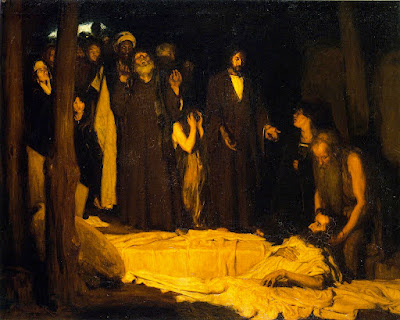







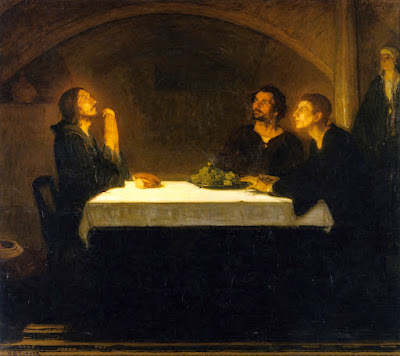






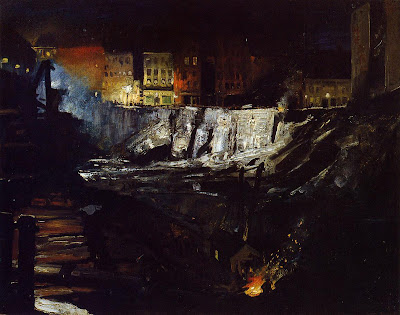

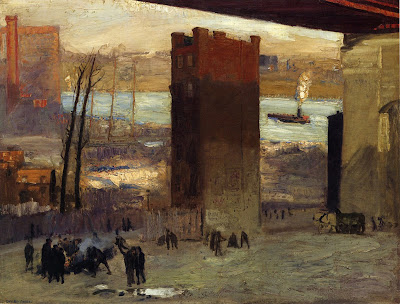













.jpg)


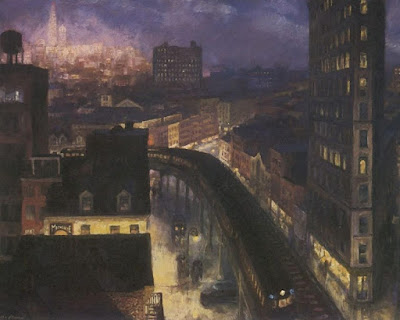










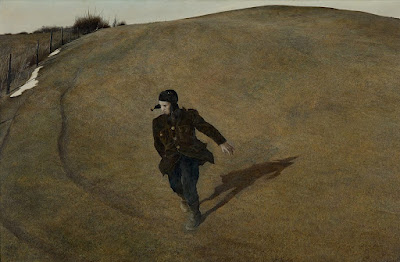











Comments
Post a Comment